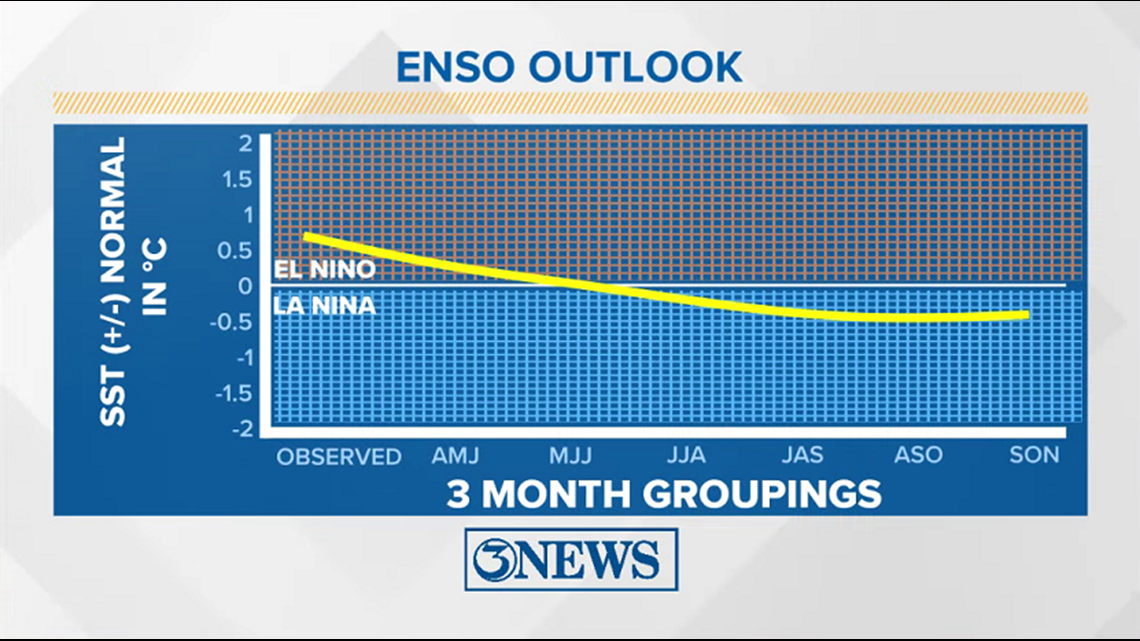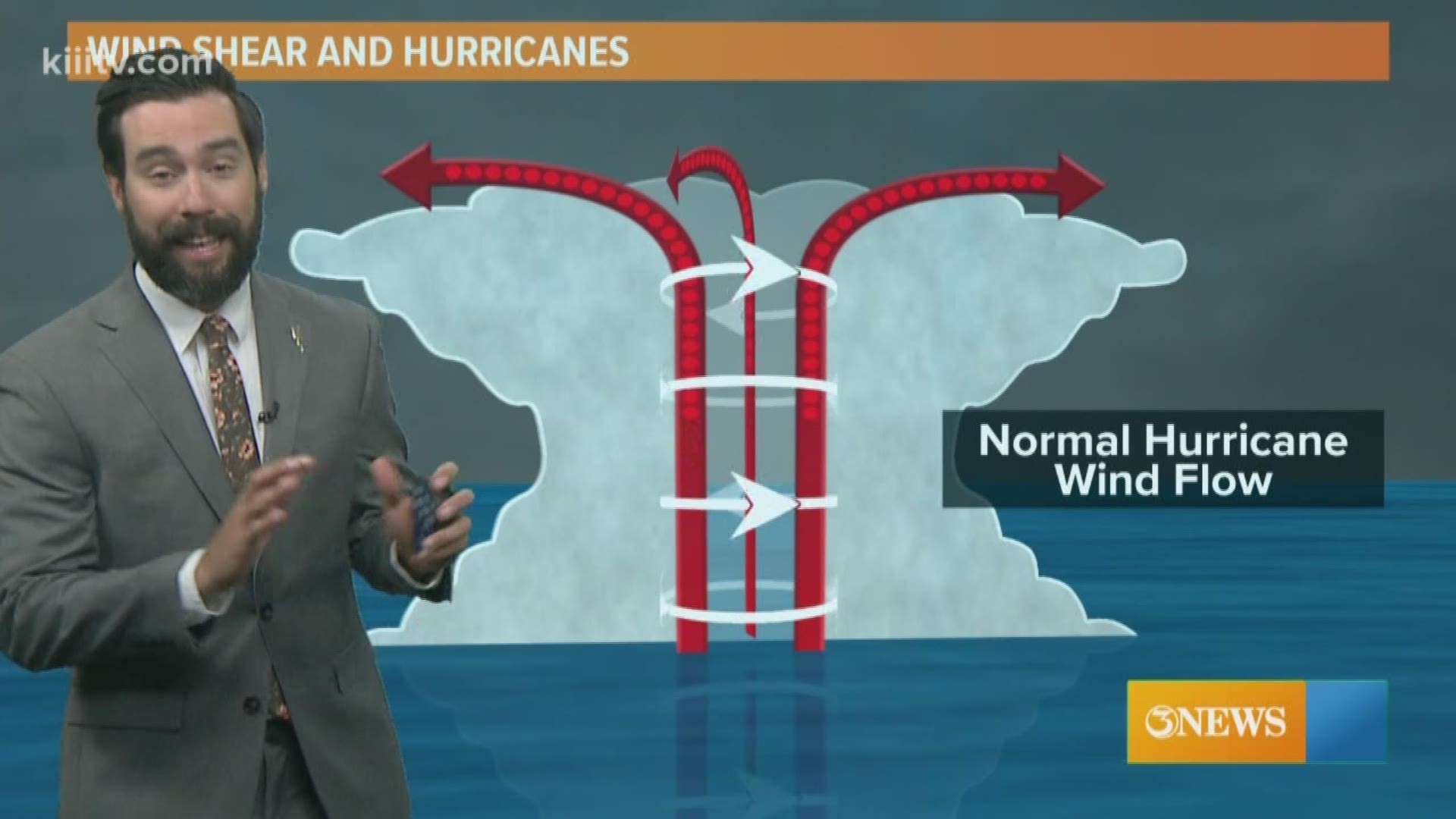CORPUS CHRISTI, Texas — You hear meteorologists reference it all the time when discussing the tropics: wind shear. This variable plays a big role in how storms develop, or don't, in the tropics.
Wind shear is a change in wind speed/direction with height. The bigger the difference, the more shear present. When wind shear is plentiful, the winds at the surface are much calmer than the faster winds in the middle and upper levels of the atmosphere. This is generally not a good thing for tropical systems. When wind shear is present, storms cannot take on symmetry and a structured low pressure center has a difficult time organizing. The core of a storm is tilted, and it falls apart. Side note: wind shear is a key ingredient necessary for thunderstorms; especially strong/severe storms as they need a tilted updraft for sustenance.
When there is a lack of wind shear, a developing low pressure center can develop as winds rush into and rise up through the warm core of the storm; this is the eye. As long as wind shear is low and waters are warm (80 degrees), tropical systems can survive, and often thrive.
Connecting the dots, a weak la nina is forecast to arrive into the middle of this hurricane season. La nina tends to produce less wind shear in the tropics when present. That's one of the reasons why the 2020 hurricane season outlook is forecast to be busier than normal.


Holt, out.

